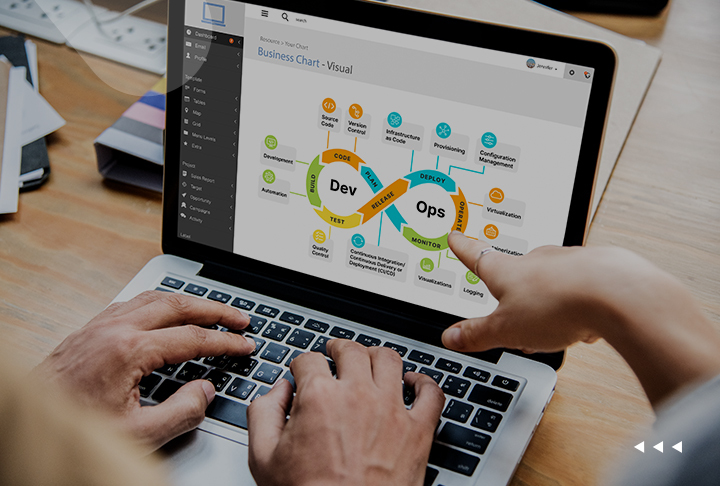
In the ever-evolving landscape of software development and IT operations, the adoption of DevOps practices has become a game-changer. DevOps, short for Development and Operations, is a cultural and technical movement that emphasizes collaboration and communication between software developers and Technical consultants. The primary goal is to automate the process of software delivery and infrastructure changes, resulting in faster development cycles, improved reliability, and increased innovation. In this article, we will delve into the key DevOps best practices 2024 that organizations are leveraging to streamline their workflows, enhance collaboration, and achieve superior outcomes.
DevOps Best Practices:
1. Cultural Shift: Embracing Collaboration and Communication
At the heart of DevOps lies a cultural shift that promotes collaboration and open communication between development, operations, and other stakeholders. Breaking down silos and fostering a shared sense of responsibility ensures that teams work together seamlessly. This cultural shift encourages a mindset where failure is seen as an opportunity to learn and improve rather than a setback.
Implementation Tip:
Foster a culture of collaboration by organizing cross-functional teams where developers, operations, and quality assurance professionals work together from the project's inception.
2. Continuous Integration (CI) and Continuous Deployment (CD)
Continuous Integration and Continuous Deployment are foundational DevOps practices that revolve around automating the building, testing, and deployment of code. CI ensures that changes made by developers are regularly integrated into a shared repository and automatically tested. CD, on the other hand, automates the delivery of code changes to production. These practices significantly reduce manual errors, enhance code quality, and expedite the release cycle.
Implementation Tip:
Utilize CI/CD tools like Jenkins, GitLab CI, or Travis CI to automate the building, testing, and deployment processes.
3. Infrastructure as Code (IaC)
Infrastructure as Code is a DevOps practice that involves managing and provisioning computing infrastructure through machine-readable script files. This allows organizations to automate the setup and configuration of infrastructure components, leading to consistent and reproducible environments. IaC enhances efficiency, reduces errors, and facilitates version control of infrastructure configurations.
Implementation Tip:
Adopt tools such as Terraform or Ansible to define and manage infrastructure as code, ensuring consistency across development, testing, and production environments.
4. Automated Testing
Automated testing is a crucial DevOps best practice that ensures the reliability and quality of software releases. By automating testing processes, teams can execute tests quickly and consistently, catching defects early in the development cycle. This not only improves the overall software quality but also accelerates the delivery of features to end-users.
Related Post: Benefits of Software Engineering
Implementation Tip:
Implement a robust automated testing framework that covers unit tests, integration tests, and end-to-end tests to validate the functionality and performance of the application.
5. Monitoring and Logging
Effective monitoring and logging are essential components of a successful DevOps strategy. Continuous monitoring provides real-time insights into the performance and health of applications and infrastructure. Logging, on the other hand, captures important events and data, aiding in troubleshooting and post-incident analysis. These practices contribute to proactive issue resolution and overall system reliability.
Implementation Tip:
Use monitoring tools like Prometheus, Grafana, or Splunk to gain visibility into system performance and implement centralized logging for effective analysis of application and system logs.
6. Version Control
Version control is a fundamental DevOps best practice that enables teams to manage and track changes to source code. Implementing version control ensures collaboration among developers, provides a historical record of code changes, and facilitates the easy identification and resolution of issues.
Implementation Tip:
Leverage version control systems like Git to manage and track changes to source code collaboratively. Establish branching strategies to manage feature development, bug fixes, and releases effectively.
7. Microservices Architecture
Microservices architecture involves developing an application as a collection of loosely coupled, independently deployable services. This approach promotes scalability, flexibility, and faster release cycles. By breaking down monolithic applications into smaller, specialized services, organizations can achieve greater agility and respond more effectively to changing business requirements.
Implementation Tip:
Adopt microservices architecture for new projects or gradually refactor existing monolithic applications to enhance scalability and agility.
8. Security Integration (DevSecOps)
DevSecOps, an extension of DevOps, integrates security practices into the custom software development and deployment processes. Embedding security measures from the outset helps identify and address vulnerabilities early in the development lifecycle, reducing the risk of security breaches in production.
Implementation Tip:
Integrate security tools and practices throughout the CI/CD pipeline, conduct regular security assessments, and ensure that security is a shared responsibility across development and operations teams.
9. Collaborative Documentation
Comprehensive and collaborative documentation is crucial for maintaining transparency and knowledge sharing within DevOps teams. Documentation should cover infrastructure configurations, deployment processes, and other critical aspects. Collaborative documentation ensures that teams can easily understand, reproduce, and troubleshoot issues.
Implementation Tip:
Use collaborative documentation platforms like Confluence or Wiki to document processes, configurations, and best practices, ensuring that information is accessible and up-to-date.
10. Feedback Loops and Continuous Improvement
DevOps thrives on feedback loops that allow teams to learn and improve continuously. Establishing mechanisms for feedback, whether through retrospective meetings, post-incident analyses, or user feedback, helps teams identify areas for improvement and implement changes iteratively.
Implementation Tip:
Conduct regular retrospectives to reflect on processes, identify bottlenecks, and collaboratively devise strategies for improvement. Encourage a culture of continuous learning and experimentation.
Conclusion
DevOps best practices represent a paradigm shift in how software development and IT operations collaborate and deliver value to businesses. By embracing a culture of collaboration, implementing automation, and integrating security measures, organizations can achieve faster release cycles. Get in touch for professional DevOps Consulting Services

Get In Touch
We're a team of passionate experts dedicated to driving growth for businesses of all sizes. Schedule a consultation now!





